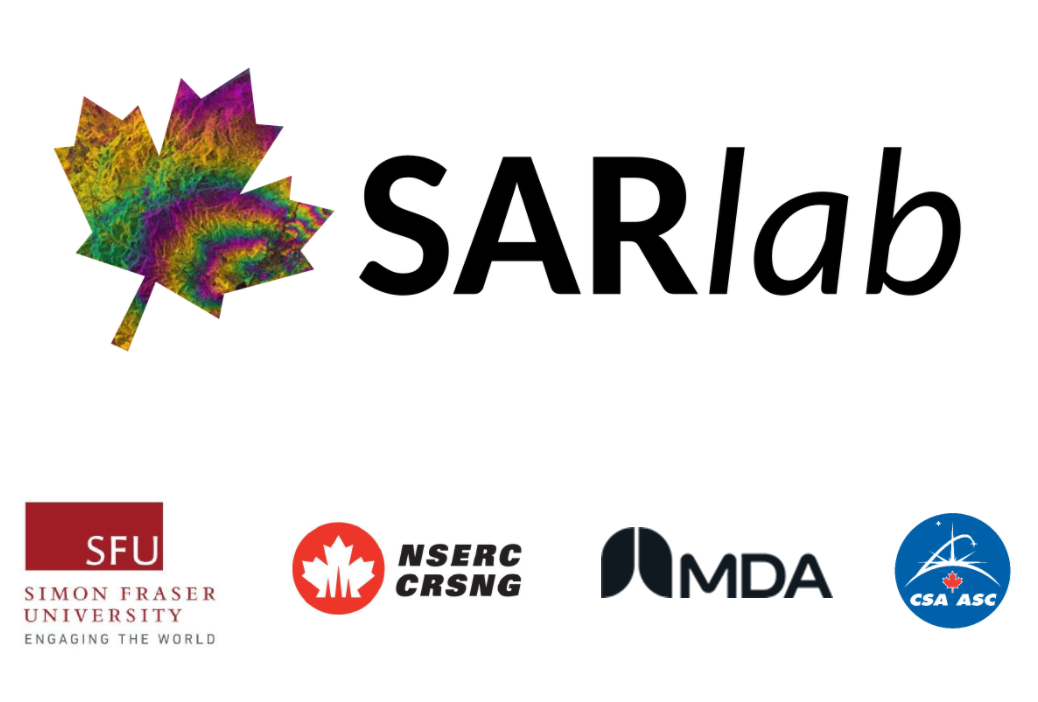Synthetic Aperture Radar Laboratory
Welcome to the homepage of the Synthetic Aperture Radar Laboratory (SARlab).
The goal of SFU's SARlab is, through training and research, to advance space-based SAR technology, foster innovation, and improve the Canadian space industry’s global competitiveness to boost economic growth. Specifically, SARlab aims to prepare graduate students and post-doctoral fellows for careers in the space sector, where half the workforce comprises of highly qualified personnel who hold undergraduate and graduate degrees.
SARlab was made possible through the Natural Sciences and Engineering Research Council (NSERC) Industrial Research Chair in Synthetic Aperture Radar (SAR), which partners Simon Fraser University, School of Engineering Science with MacDonald, Dettwiler and Associates (MDA) and the Canadian Space Agency (CSA).
Information on Graduate Student opportunities can be found here.
About Synthetic Aperture Radar (SAR):
- SAR is a remote-sensing technique that can capture high-definition images of Earth
- Sensors transmit microwave pulses and record reflections from the Earth’s surface, revealing key characteristics of its surface, such as vegetation and infrastructure.
- Unlike traditional optical methods, SAR is weather independent and can capture images through rain, clouds and darkness.
- Sophisticated algorithms process the holographic SAR raw data to create the final high-definition images that are used to derive unique information about the Earth surface, including soil and vegetation layers.
- Two or more SAR images acquired over the same area and with the same imaging geometry, but at different times, can be used to derive subtle changes that have occurred in the area and provide essential information of changes or movements. It is therefore a critical tool in environmental and natural resource monitoring and maritime surveillance and security.
Space-based SAR applications include:
- Monitoring Canada’s North to understand the stability and evolution of permafrost, glaciers and ice sheets;
- Providing daily monitoring of sea ice to enable safe navigation through ice-infested waters;
- Monitoring and safeguarding national assets, urban infrastructure, natural resources and the environment;
- Predicting and measuring landslides, volcanic, and seismic activities to keep critical infrastructure and people safe, and to rapidly recover from such natural disasters;
- Providing reliable, frequent, broad-area maritime surveillance for defence and national security, such as vessel detection, characterization and classifciation.
- Monitoring oil on water, and critical infrastructures like pipelines.



